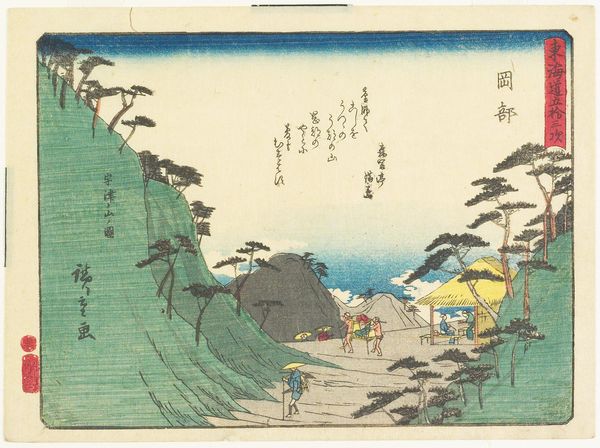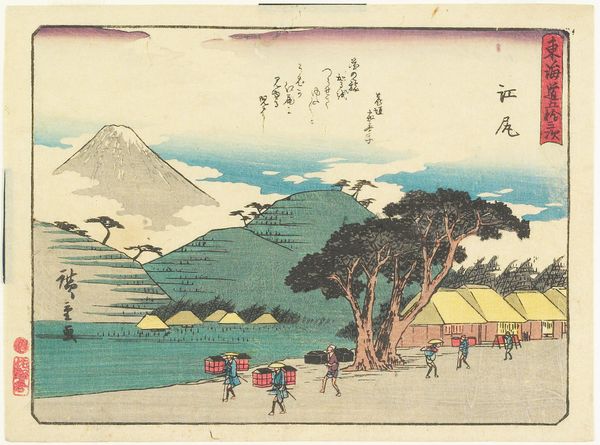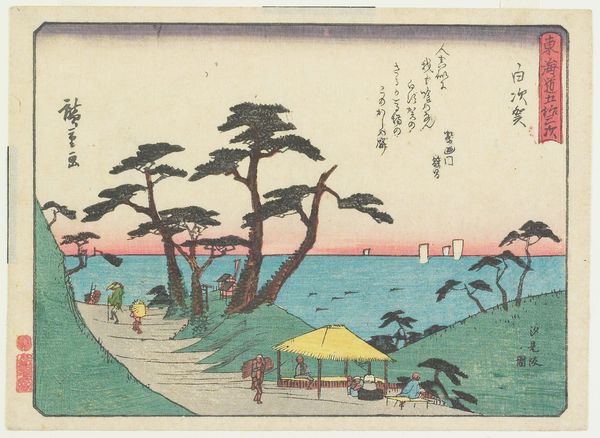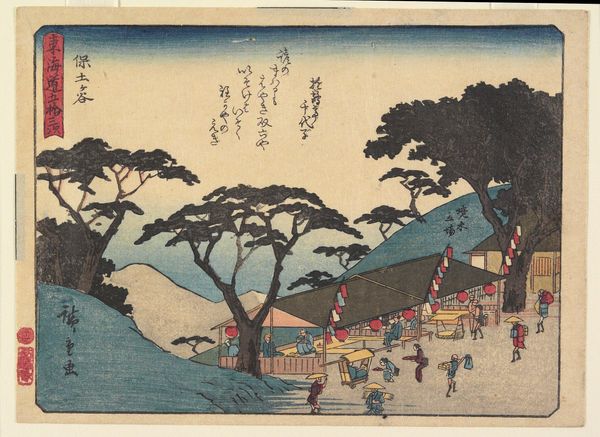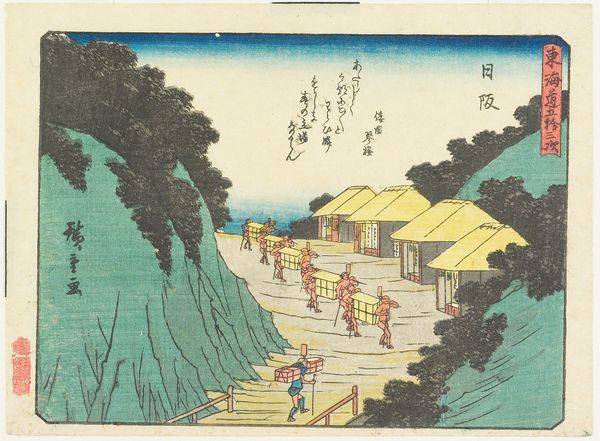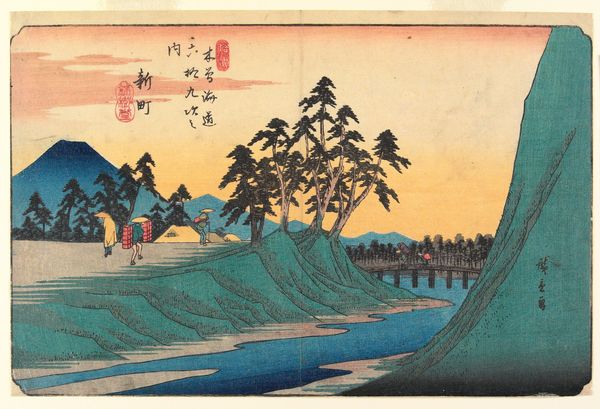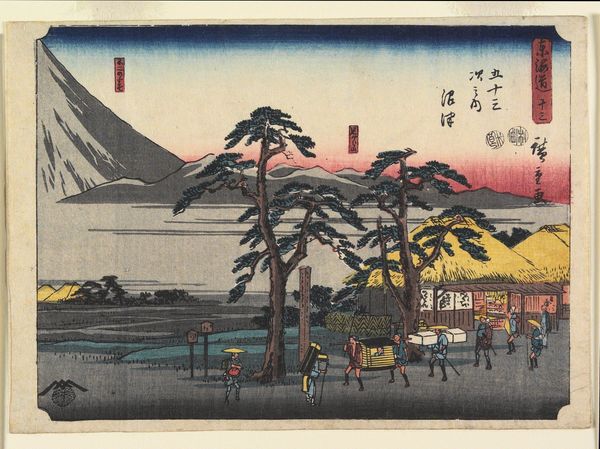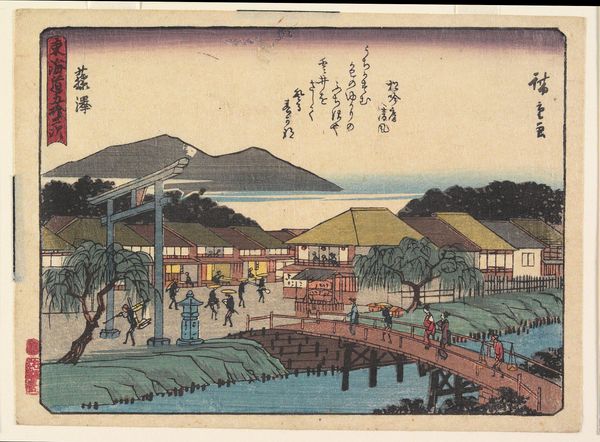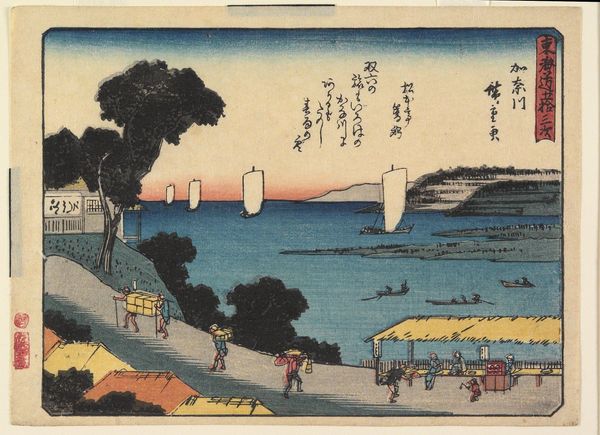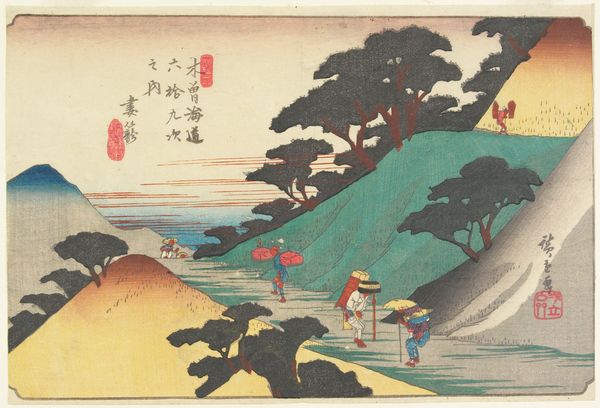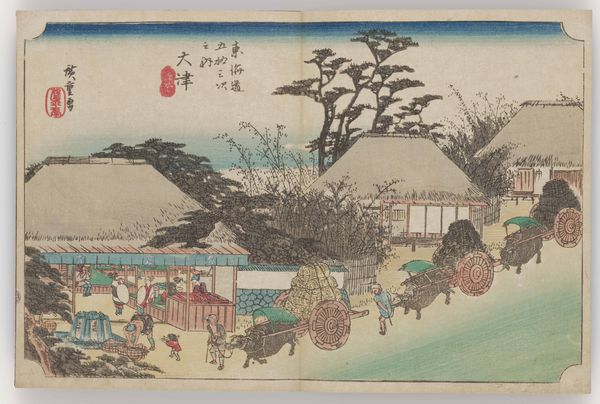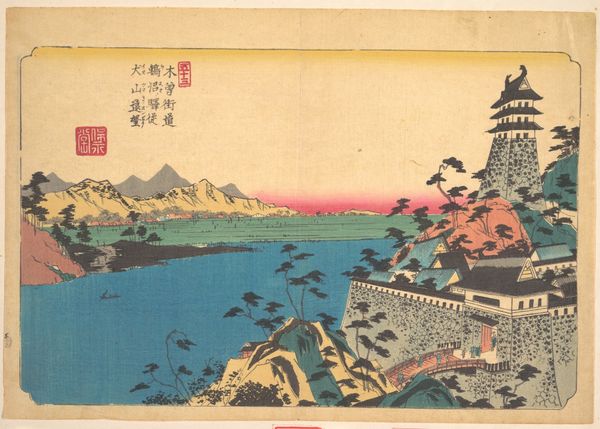
print, paper, ink, woodblock-print, wood
# print
#
landscape
#
ukiyo-e
#
paper
#
ink
#
woodblock-print
#
wood
Dimensions: 6 1/16 x 8 1/4 in. (15.4 x 21 cm) (image)6 9/16 x 8 15/16 in. (16.7 x 22.7 cm) (sheet)14 x 17 15/16 in. (35.5 x 45.5 cm) (mat)
Copyright: Public Domain
Curator: This tranquil woodblock print, “Kameyama,” was created by Utagawa Hiroshige sometime between 1840 and 1842. You can currently find it here at the Minneapolis Institute of Art. Editor: The muted colours create a calm, almost melancholy feeling. It reminds me of a watercolour painting, despite the clear lines of the print. It's so visually quiet. Curator: The scene captures travellers along the Tokaido Road, which connected Edo, modern-day Tokyo, with Kyoto. Woodblock prints of this nature weren’t just picturesque postcards, they also fulfilled a demand for accessible art during a period of economic and cultural flourishing. They held tremendous appeal. Editor: Look at those travelers! You see their small hats, little bursts of pale gold punctuating the muted landscape, like prayers ascending. Curator: That's a beautiful image. Consider how these roadside scenes allowed viewers, particularly urban dwellers, to vicariously experience a journey. Beyond simple landscape depiction, you could almost read the image as a spiritual journey, considering Shinto and Buddhist elements integrated into Japanese life at this time. The distant mountain… Editor: It really anchors everything, doesn’t it? The whole scene feels directed toward this distant mountain and palace… which perhaps hints at larger themes of pilgrimage. Almost makes the human travelers into ants. Curator: The use of perspective draws the viewer into the scene. Hiroshige, like many artists of the Ukiyo-e tradition, masterfully combined traditional Japanese aesthetics with influences of Western art to achieve this kind of depth and realism. The way it collapses foreground and background space... brilliant. Editor: It almost feels staged, with these deliberate groupings of travellers leading our eye. Curator: Exactly. The landscape isn't just scenery, it's also a carefully arranged stage. To consider that today as the intersection of history, landscape, cultural memory is profound. Editor: Right, a constructed world meant for mass consumption! I see the people now, more as symbolic echoes of our own transient journeys, each little hat just another prayer floating upward. What a lovely bit of social commentary on time, transition and place!
Comments
No comments
Be the first to comment and join the conversation on the ultimate creative platform.
